New And Returning Customer Purchase In Google Ads
As marketers, we know that understanding the difference between new and returning customers in your Google Ads campaigns is essential for budget allocation and maximizing ad spend efficiency. Your goal is to maximize new customer influx at projected cost per acquisition (CAC) while maintaining a balanced budget for retention campaigns.
Why Track New and Returning Customer Purchases Separately?
New customers are critical for business growth, as they expand your customer base and create long-term sustainability. However, acquiring them typically costs more than retaining existing customers.
Returning customers, on the other hand, should primarily be engaged through owned channels like email and organic social media. In some cases - such as re-engaging dormant customers - Google Ads retargeting may be justified.
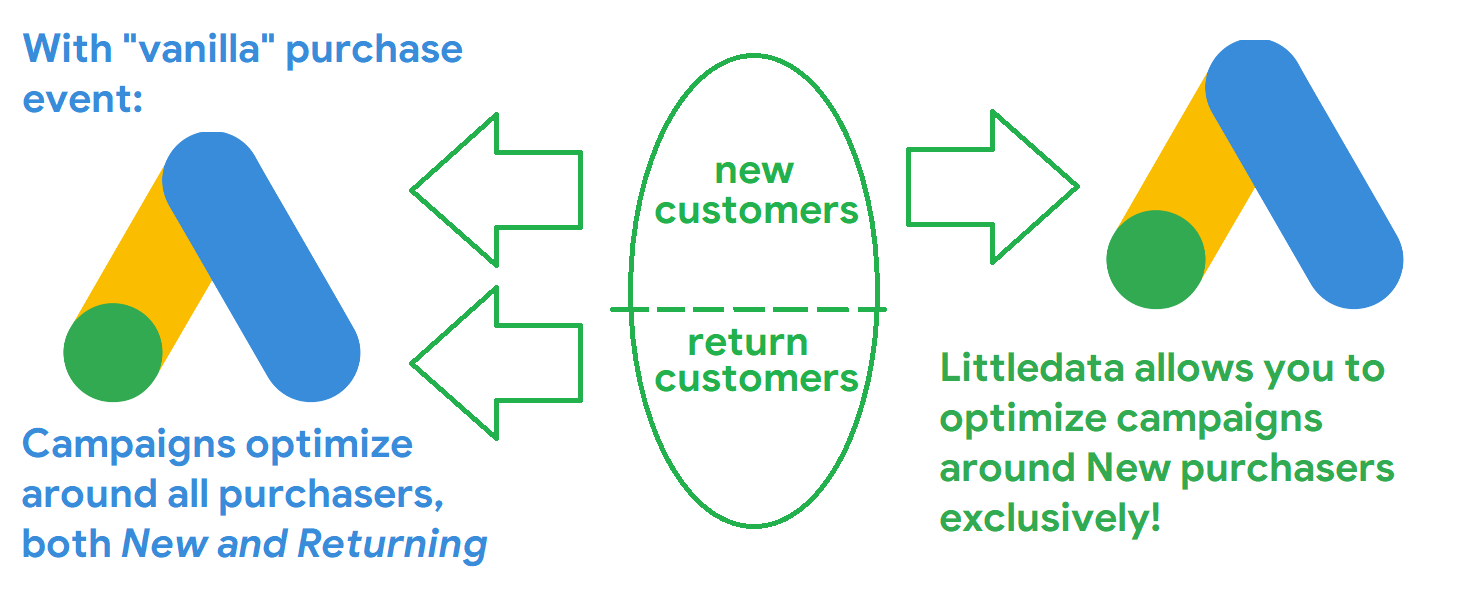
By tracking these two purchase events separately, you can make informed decisions about budget distribution, ensuring that your campaigns focus on acquiring new customers while efficiently managing retention costs.
Enhanced Conversions in Google Ads: The Key to Reliable Data
Enhanced conversions in Google Ads, particularly those sent by Littledata directly from Shopify’s server, provide a more accurate and privacy-compliant method for tracking purchases. Unlike traditional client-side tracking, which is vulnerable to blockers and privacy restrictions, server-side tracking ensures near-100% accuracy.
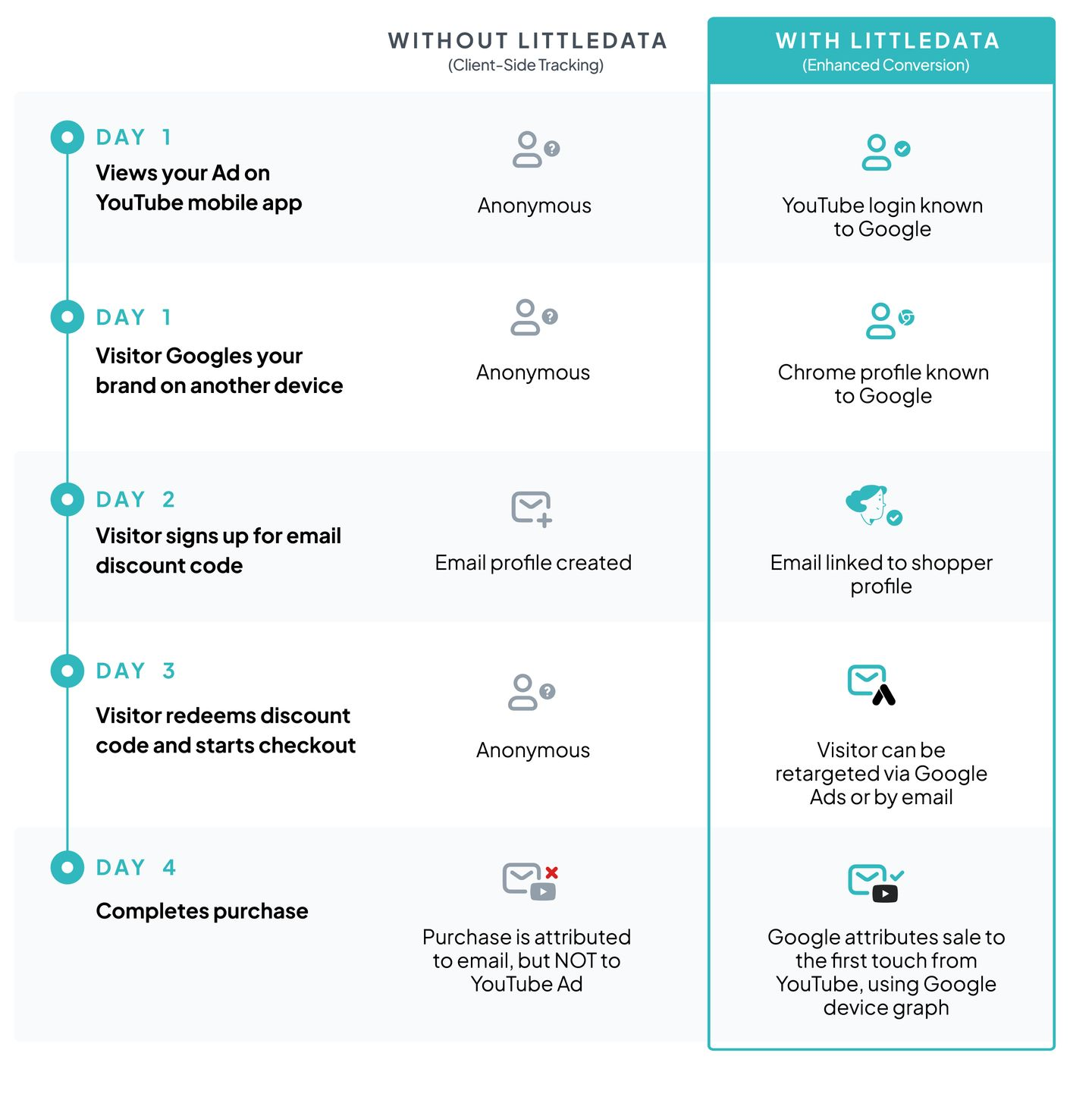
Littledata ensures that each purchase event is transmitted directly to Google Ads, bypassing tracking gaps while protecting user privacy through hashed personally identifiable information (PII) such as name, email, and phone number.
Littledata's enhanced conversion tracking for Google Ads specifically identifies three types of purchases:
-
General purchase: Tracks all conversions.
-
New customer purchase: Identifies customers making their first purchase.
-
Returning customer purchase: Flags repeat buyers.
This segmentation provides Google Ads with critical data, allowing you to optimize your campaigns based on whether a customer is new or returning.
Leveraging Littledata’s Enhanced Conversion Tracking for Google Ads
Littledata’s enhanced conversion tracking solves several challenges at once:
-
by hashing PII, it improves accuracy in Google Ads while ensuring compliance with privacy regulations
-
overcomes the sunset of so called “Similar audiences” in Google ads by sending only new customers as a conversion that enables campaigns to optimize around it and expand your customer base

Alternative Methods and Their Limitations
While you can import audience lists manually, this method lacks browser identifiers. Similarly, importing data from Google Analytics has its drawbacks: incomplete purchase data (unless Google Analytics is integrated with Littledata), lack of hashed PII (Google Analytics does not send name, email, or phone number with each transaction).
Even if you set your campaigns to optimize for new customers within Google Ads, traditional tracking methods still fail to capture crucial browser identifiers and personally identifiable information.
Setting Up New Customer Purchase Tracking in Google Ads with Littledata
To get started with Littledata’s enhanced conversions for Google Ads:
1. Enable the Shopify-to-Google Ads connection in the Littledata admin. It will automatically track three conversion events: General purchase, New customer purchase, and Returning customer purchase.
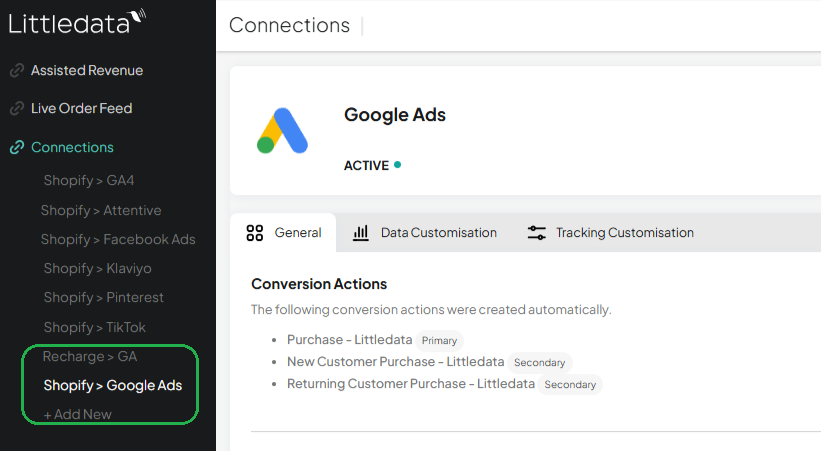
- Wait 10-12 hours for data to populate in your Google Ads account, then go to the Goals section in Google Ads:
Scroll down and click “Add Custom Goal.”

Select “New customer purchase (Littledata)” and “Returning customer purchase (Littledata).”
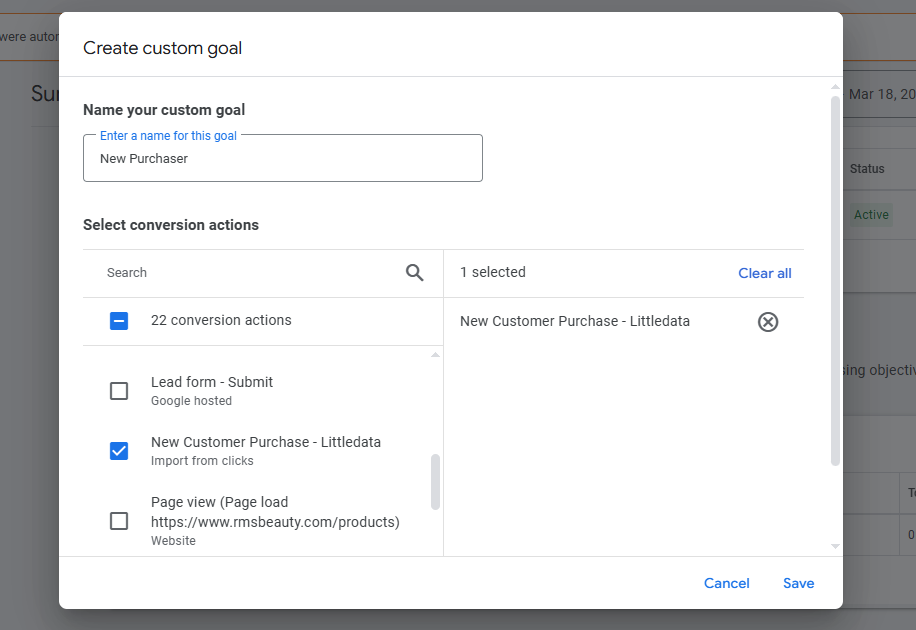
Name them accordingly and save.
- Assign the new customer purchase goal to specific campaigns:
Go to the campaign of your choice.
Select “Campaign-specific goal.”
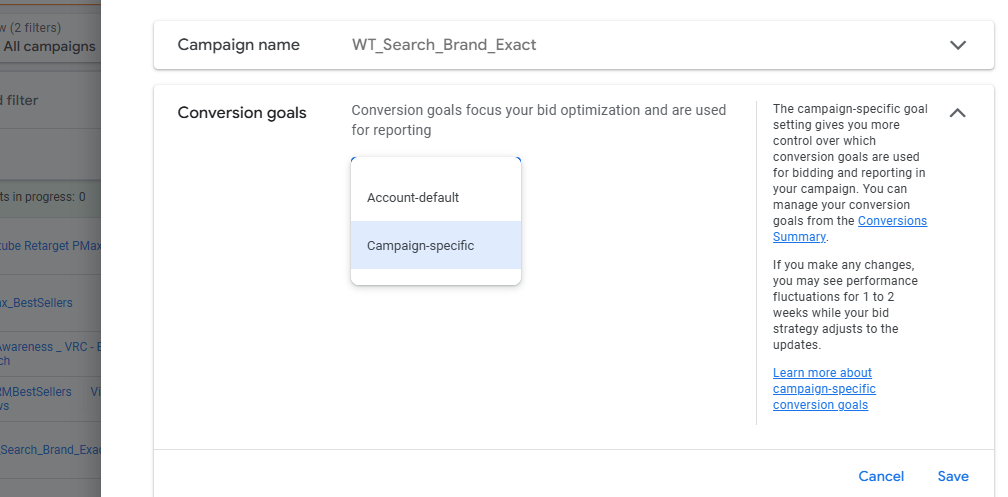
Choose the custom goal for new customer purchases.
Key Considerations for Optimizing Customer Acquisition Costs
While optimizing campaigns exclusively for new customers will naturally increase acquisition costs, this should not be seen as a downside. The goal is not simply to lower cost per sale—it’s about acquiring high-value customers who will generate long-term revenue.
To set an effective customer acquisition cost (CAC), consider:
-
Customer lifetime value (CLV)
-
Retention period (especially if you operate a subscription-based model)
-
Average number of purchases per customer
By strategically investing in new customer acquisition while maintaining cost-effective retention strategies, you can build a sustainable growth model.
Final Thoughts
Tracking new versus returning customers in Google Ads is a game-changer for campaign optimization. By using Littledata’s enhanced conversions, you ensure accurate, privacy-compliant data that helps you make smarter budget allocation decisions.
Implementing these best practices will help you strike the right balance between acquiring new customers and nurturing existing ones—ultimately leading to better ad spend efficiency and long-term business growth.
Happy advertising!
\